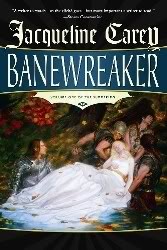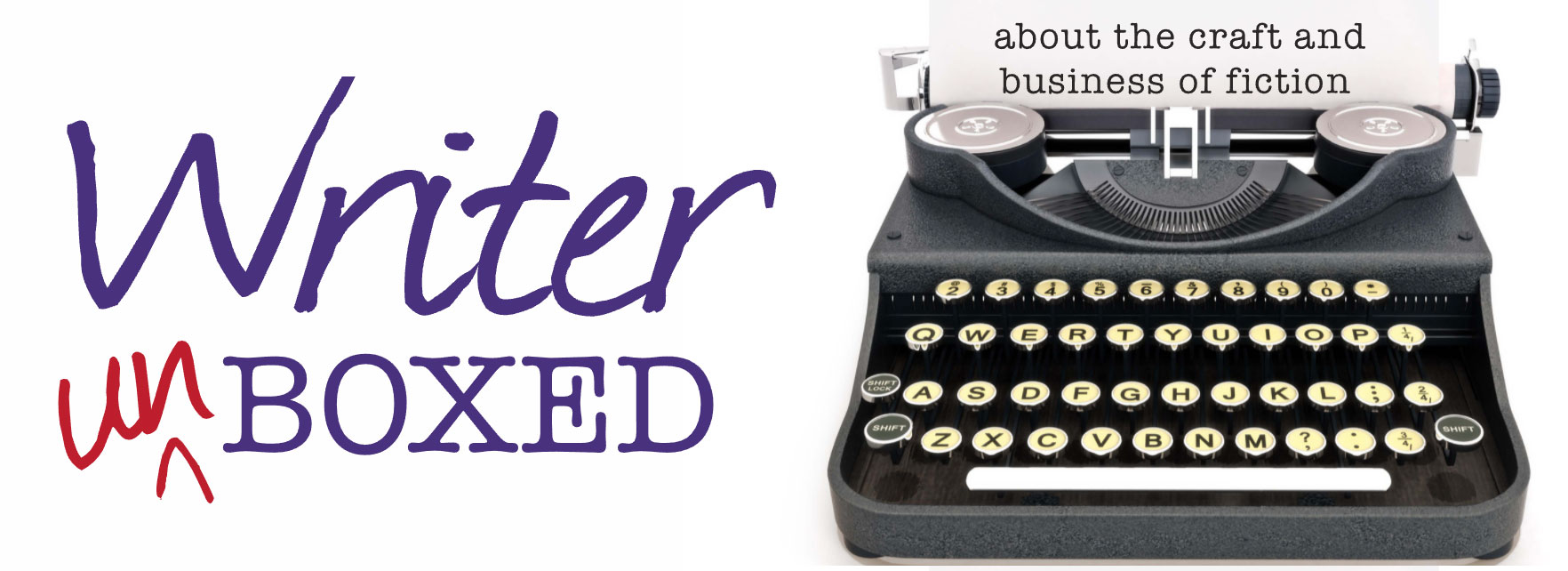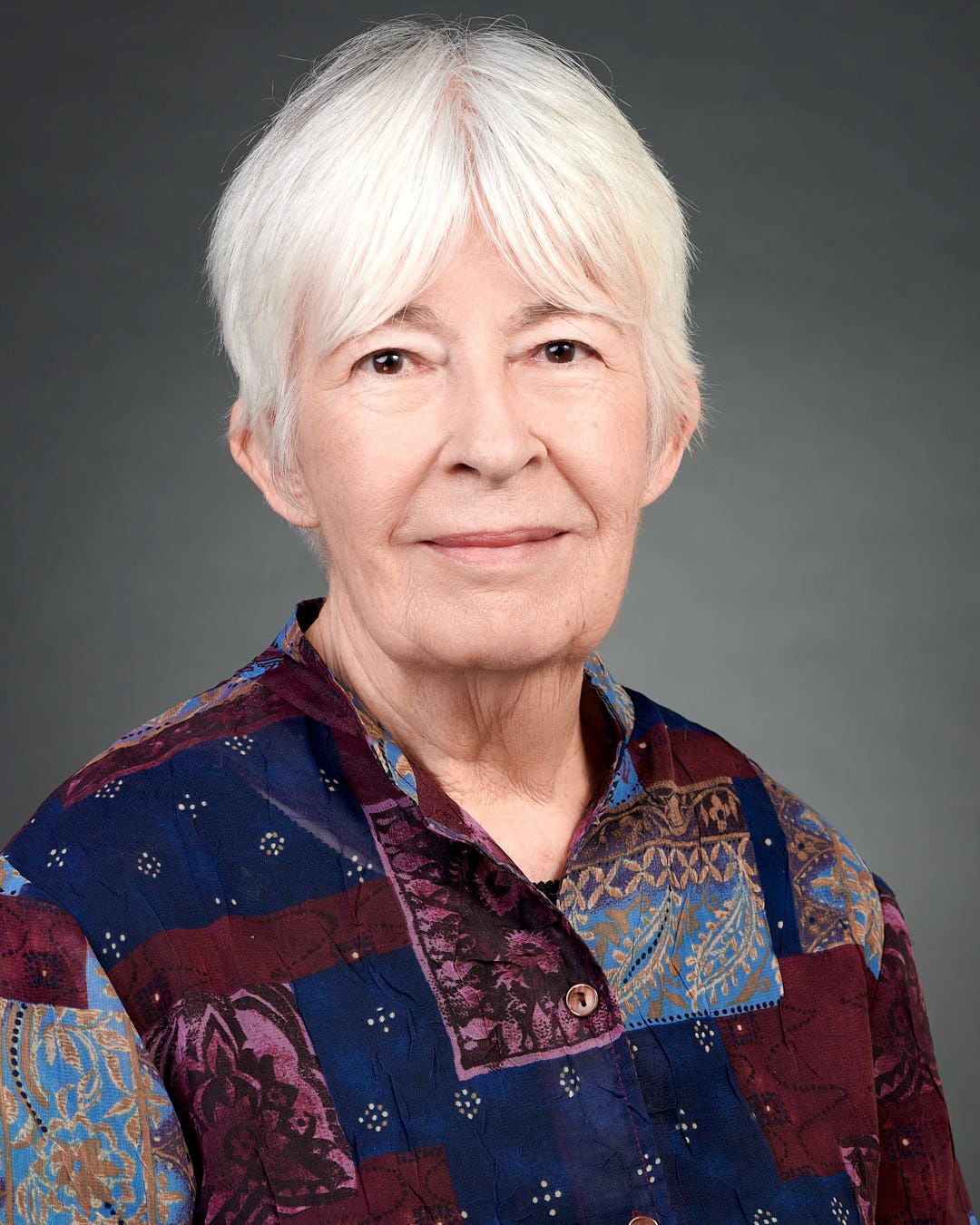INTERVIEW: Jacqueline Carey, Part 3
By Juliet Marillier | November 16, 2007 |
 Please note: This interview was conducted by fantasy author, and WU contributor, Juliet Marillier.
Please note: This interview was conducted by fantasy author, and WU contributor, Juliet Marillier.
In the third part of her interview with Writer Unboxed, bestselling author Jacqueline Carey discusses her influences, her approach to the job of writing and her relationship with what must be one of the most dedicated groups of fans in the world of fantasy.
Part 3: Interview with Jacqueline Carey
Q: You’ve trained and worked as an art historian, and the ‘set piece’ scenes in your books are highly visual. What influence does your art background have on the way you write?
JC: Funny you should ask! That’s actually an error that keeps popping up in my bio. Although I worked for the Art & Art History Department of a local college, I’m not an art historian. But I did work in the visual arts for over a decade and it definitely trained my eye to see in terms of formal composition, which informs the way I visualize and describe scenes as I write.
Q: Dorothy Dunnett remains one of my favourite authors of all time, and I suspect you may also be a fan of hers. Kushiel’s Justice contains the same blend of compelling adventure, rich characterization and sumptuous historical settings as her Lymond Chronicles. Which authors have influenced your storytelling most, and in what ways?
JC: I do love Dorothy Dunnett, and the complexity and intricacy of her storytelling was certainly an influence. A lot of my influences come from historical fiction; Mary Renault, Robert Graves, Colleen McCullough. I love the way they bring worlds to life and weave vivid tapestries in time. Alexandre Dumas was a definite influence, too. On the fantasy side, I discovered that prose could be lyrical reading the work of Patricia McKillip. Richard Adams’ Shardik was the first fantasy novel I read that was gritty and challenging and incorporated a powerful use of religion. As a lifelong avid reader, there are probably hundreds of other authors who’ve influenced me; I just can’t remember them all!
Q: You have a very dedicated fan following – the tattoo page on your website shows just how devoted some of them are! How did your fans react when you took a change of direction with Banewreaker and Godslayer? Were you under pressure from readers and your editor to write more Kushiel books straight after that first trilogy, and if so why did you decide to do something different first? How did your fans respond to The Sundering?
JC: I needed to challenge myself creatively and do something completely different in between the first and second Kushiel trilogies. Because there was such a long lag time – 2 ½ years – between the sale and publication of the first volume, I didn’t have the following I do now when Tor bought the rights to The Sundering, so pressure wasn’t an issue. By the time I delivered it, things had changed. There were a number of fans who were disappointed that it wasn’t “more of the same, only different.” There is also a smaller group of fans who prefer it to the Kushiel books. The Sundering is Tolkienesque epic fantasy rewritten as epic tragedy from a perspective sympathetic to the losing side. Those who got it, really got it; those who didn’t, didn’t. So it goes.
Q: The epic story of The Sundering is told in third person, with multiple points of view. What impact did this choice have on your ability to involve your reader intimately with the world of the story (one of the great strengths of the Kushiel books?) What were some of the advantages? Do you prefer to write in first person and if so, why?
JC: It’s definitely less emotionally intimate, though that was also a deliberate choice. I was riffing on Tolkien, whose prose is far more cerebral than emotional. The advantage of a multiple, shifting, third person point of view is that it let me weave a multitude of storylines together at the same time. In first person, you’re constrained to a single perspective. On the other hand, I find it easier to sustain momentum writing in the first person since the point of view remains consistent. I can’t say I prefer one over the other; they both have their advantages.
Q: We’ve had some recent discussion on Writer Unboxed about planning – some novelists do a lot of it in advance, and some let things unfold organically as they write. Could you share your process with us from conceiving the idea for a novel to sending the ms to your editor? Do you write outlines, synopses and chapter plans? Do you use other tools like maps, time charts or character profiles? Do you write scenes out of sequence? To what extent does your original story idea change as you write?
JC: I find my process somewhat hard to describe because most of it takes place in my head. It starts with various sparks of inspiration which I nurture through research and a lot of mental work. Eventually, that coalesces into a whole. I don’t write outlines or chapter plans, but I have the basic framework of the story well in mind before I begin writing. I do generally write a synopsis prior to beginning for the purpose of pitching a book to my editor. I may be surprised by details here and there along the way, but by and large, the final story adheres quite closely to my original concept. My plots don’t allow for a lot of wiggle room.
Although I need to consult maps during the process, I don’t draw up my own until after I’m finished (and my editor nags me, because I’m a lousy cartographer and I always procrastinate when it comes to map-making). Other than relying on research materials, I don’t use any particular creative tools. And while I know it works for many writers, I absolutely, positively cannot write out of sequence! I’m an edit-as-I-go writer, and I can’t move forward until everything is as polished as can be. I’ve been known to get hung up for days because I couldn’t visualize a particular garment.
Q: It sounds as if you’ve been doing some interesting travel, including Egypt and Finland, and I’m assuming that’s at least partly for research purposes. Do you make notes as you go? Take photos? Or is it more a matter of immersing yourself in the culture and processing it all after you get home?
JC: I do travel for research whenever I can, though unfortunately, I’ve been traveling less since I began writing full-time! But at this point, I consider almost all travel research since I’m likely to draw on it sooner or later. I’ll take a few photos if I remember my camera, but on the whole, I’m very much of the immerse and absorb school of travel research. I like to get a feel for the sights, smells and rhythms of a place. As much as anything else, Terre d’Ange was inspired by sitting on the patio of a place I stayed in Provence, drinking wine, eating oil-cured olives and watching dusk settle over the countryside.
Q: Where would you most like to go, and where are you most likely to go next?
JC: China; and hopefully, China. I’ve always wanted to visit and it’s changing so fast, I feel I shouldn’t put it off.
Q: You’ve had a pretty active time recently touring, doing signings, being GOH at conventions and so on. That level of activity must eat into your writing time. Are you highly organised when it comes to your working day? What is your usual routine?
JC: I can’t write on the road, so I try to use the travel time to focus on the creative mental work that goes into the process; and to catch up on my reading. The most disruptive travel experience I ever had was actually a lovely vacation! I left on the verge of the scene in Kushiel’s Justice where Sidonie stands up to Barquiel L’Envers and lays a verbal smackdown on him. It’s a break-out moment for her character and probably the longest piece of dialogue in the entire book. Every single night, I’d lie awake in the wee hours, writing and rewriting it.
But normally my routine is pretty… well, routine. I spend the mornings and early afternoon replying to email, paying bills, running errands, etc. I write 3-4 hours in the late afternoon to early evening. When I’m immersed in a project, that’s it, day in and day out.
Q: Your next project sounds like a big departure from your previous work – on your website you refer to it as ‘a post-punk desert bordertown fable, with boxing and cute girls in love.’ I suspect you relish challenging yourself creatively. Was it easy to snap into such a different writing mode? Any particular techniques for getting into the right mindset?
JC: I do like to challenge myself! I think it helps maintain a creative edge. This book – the working title is Santa Olivia – is a total departure. The prose is quite spare and my heroine isn’t very articulate. It’s a fun, quirky book that doesn’t take itself very seriously. After another three thousand pages of angst and high drama, it wasn’t just easy, it came as a blessed relief. I needed a literary palate-cleanser! I don’t have any particular techniques, I just spend a lot of time in deep cogitation before I begin a new project.
Footnote: Kushiel’s Mercy, the sixth and final book in Kushiel’s Legacy, will be published by Warner Books in 2008.
Thank you, Jacqueline Carey, for a fascinating interview; and thank you, Juliet Marillier for taking the time to conduct it.










Thanks, Juliet and Jacqueline, for those fascinating insights. Jacqueline must number among the world’s most versatile writers!
This was, as Satima said, a fascinating interview. Thanks to both Jacqueline and Juliet for their time with this. It was a real treat.
And Kushiel’s Dart is now among the books waiting for my attention on my bedside table. I look forward to the read!
And I’m hanging out for Kushiel’s Mercy. I really enjoyed doing the interview with Jacqueline; she always has something worth saying. Her comments about her method are interesting in the light of the recent discussions on WU about architects and pantsers. Jacqueline does plan, but without recourse to outlines, chapter summaries etc. Hers is a mental rather than a written plan. Easier to change!
Within only a week have I pursued information regarding Jacqueline Carey online; I’ve preferred – over these past several years – to allow her novels to speak for themselves. However, with my recent completion of “Kushiel’s Mercy”, I’ve endeavored to seek out background information regarding my favorite author of all time.
Never in my life have I joyfully cried so many times over the progressions of a single novel as I did over “Kushiel’s Mercy”. In fact, the only other time I’ve cried thus over a novel was at the end of “Kushiel’s Avatar”. “Kushiel’s Mercy” had me weeping with empathy, confirmation & joy throughout. I’m so filled with the conclusion(?) to the “Kushiel” legacy!
I’m confident that Jacqueline Carey will continue to dazzle we readers with her brilliance, in whatever form that may take. I thoroughly enjoyed the difference in her writing throughout my reading of “The Sundering”. I’m forever grateful for the only authored legacy in “Kushiel” that has moved me so emotionally. Thank you, Jacqueline Carey.